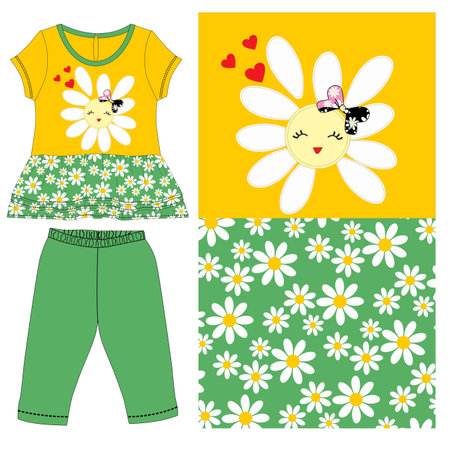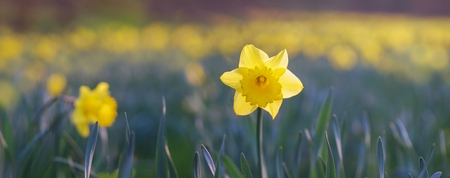Introduction to Daffodils in British Culture
Daffodils, with their unmistakable golden trumpets and fresh green stems, are an enduring symbol of springtime across the United Kingdom. Emerging as one of the very first flowers after winter’s retreat, they herald not only the changing of the seasons but also a sense of renewal and hope deeply rooted in British tradition. Their significance goes far beyond mere decoration; daffodils are woven into the fabric of British folklore and community life. In literature and art, daffodils have inspired countless poets and painters—most famously William Wordsworth, whose poem “I Wandered Lonely as a Cloud” immortalised these blooms in the national imagination. Beyond artistic representation, daffodils play a role in annual festivals, village fairs, and local gatherings, where communities come together to celebrate the arrival of spring. The flower is also associated with charitable causes, most notably as the emblem for Marie Curie Cancer Care, reflecting its strong cultural presence as a symbol of hope and new beginnings throughout Britain.
Choosing the Right Daffodil Varieties
When it comes to planning and planting daffodils, selecting the right cultivars is essential for a successful and vibrant British spring display. The United Kingdom’s climate and diverse garden conditions mean there’s a daffodil variety suited for almost every setting. Here’s how to choose wisely.
Popular Daffodil Cultivars for British Gardens
British gardeners have long cherished certain cultivars for their reliability, beauty, and performance. Below is a table highlighting some of the most beloved varieties along with their key characteristics:
| Cultivar Name | Flower Form | Height (cm) | Best For |
|---|---|---|---|
| King Alfred | Large Trumpet | 40-45 | Classic Borders |
| Tête-à-Tête | Dwarf, Multi-head | 15-20 | Pots, Edging |
| Carlton | Large Cup | 40-50 | Naturalising Lawns |
| Mount Hood | White Trumpet | 35-45 | Woodland Gardens |
| Pheasant’s Eye | Poeticus (Narcissus poeticus) | 30-40 | Latter Spring Interest |
Tips on Selecting Quality Bulbs
- Size Matters: Larger bulbs generally produce stronger, more reliable blooms in their first season.
- Avoid Soft or Mouldy Bulbs: Only choose firm, healthy bulbs free from blemishes and visible rot.
- Select by Flowering Time: Stagger varieties with different bloom times—early, mid, and late season—for prolonged displays.
- Scented Choices: Consider fragrant varieties like Actaea or Cheerfulness for added sensory delight.
Soil and Regional Considerations Across Britain
Daffodils are notably adaptable but perform best when matched to their environment. Here’s what to keep in mind:
- Soil Type: Well-drained soil is crucial; heavy clay can be improved with grit or organic matter.
- Northern Regions: Choose early-flowering, robust cultivars that can withstand cooler springs.
- Southern Counties: Most daffodils thrive, but late-bloomers excel in milder climates.
- Damp Areas: Avoid waterlogged spots; consider raised beds if drainage is poor.
- Pots & Containers: Dwarf varieties such as ‘Tête-à-Tête’ flourish in pots—ideal for patios and balconies.
Your Next Steps: Plan Ahead for Spring Glory
Selecting the right daffodil varieties tailored to your garden’s conditions will ensure a cheerful and classic springtime spectacle. Take time to research cultivars and assess your site before purchasing bulbs—your efforts now will reward you with a quintessentially British floral display come March and April.

3. Preparing Your Garden for Planting
Getting your garden ready for daffodil planting is a crucial step if you want a truly magnificent spring display. In the UK, where weather can be unpredictable and soil types vary widely from region to region, a bit of thoughtful preparation goes a long way. Start by choosing a spot that receives plenty of sunlight—daffodils thrive best in areas that get at least half a day of sun. Avoid overly shady corners or spots beneath dense trees, as this can stunt their growth and reduce flowering.
Improving Soil Structure
Daffodils are quite resilient, but they do appreciate well-drained soil. Heavy clay can lead to waterlogging and bulb rot, especially during wet British winters. To counter this, dig over your beds thoroughly, aiming for at least a spade’s depth. Incorporate plenty of organic matter such as well-rotted compost or leaf mould to improve texture and drainage. If your garden tends towards the boggy side, consider raising your beds slightly or adding coarse grit to further enhance drainage.
Selecting the Best Location
For optimal flowering, think about both aspect and shelter. A south- or west-facing border is ideal, catching those precious rays as the days lengthen in early spring. While daffodils are fairly robust when it comes to wind, excessive exposure can snap their stems just as they reach their prime. Positioning them near hedges or low walls can offer protection without compromising sunlight.
Final Bed Preparation Tips
Once you’ve selected the location and improved your soil, rake the surface level and remove any persistent weeds or stones. Avoid using fresh manure or high-nitrogen fertilisers at this stage—they encourage leafy growth rather than blooms. Instead, a balanced slow-release fertiliser applied before planting will give bulbs a good start without overwhelming them.
4. The Planting Process: When and How
Planting daffodils is a straightforward yet rewarding ritual for any UK gardener, whether you’re a seasoned allotment holder or simply brightening up your front garden. Timing, technique, and arrangement all contribute to that classic British springtime display.
When to Plant Daffodils in the UK
The ideal period for planting daffodil bulbs in the UK is from September to November, before the first hard frost sets in. This timing allows bulbs to establish roots while the soil is still warm but not waterlogged—a typical condition in many British gardens during autumn.
How Deep and How Far Apart?
Proper planting depth and spacing are crucial for healthy growth and robust blooms. Here’s a quick reference table for guidance:
| Bulb Size | Planting Depth (cm) | Spacing Between Bulbs (cm) |
|---|---|---|
| Standard Daffodil | 10-15 | 10-15 |
| Dwarf Varieties | 8-10 | 8-10 |
A general rule of thumb is to plant bulbs at a depth roughly three times their own height.
Step-by-Step Planting Guide
- Select your site: Choose a well-drained spot with plenty of sunlight, typical of many British gardens.
- Prepare the soil: Loosen the earth and incorporate organic matter if your soil is heavy or clay-based.
- Dig holes: Use a trowel or bulb planter, following the recommended depth and spacing above.
- Position the bulbs: Place bulbs pointy end up. For group plantings, cluster 6–12 bulbs together rather than planting in straight lines for a more natural look.
- Backfill and firm: Cover with soil and gently firm down to remove air pockets.
- Water well: Give them a good soak after planting, then let autumn rains do the rest.
Techniques for Group or Naturalised Displays
If aiming for a traditional British naturalised effect—think swathes of yellow under trees or along borders—scatter bulbs by hand over your chosen area and plant them where they land. This irregular spacing mimics nature’s randomness and looks especially charming come springtime.
Summary Table: Planting Tips at a Glance
| Step | Description | Cultural Tip |
|---|---|---|
| Siting | Select sunny, well-drained area | Avoid waterlogged spots common in British winters |
| Timing | September–November planting window | Gives roots time before frost sets in |
| Arrangement | Bury in clusters or scatter naturally | Mimics classic cottage garden style |
| Depth & Spacing | See table above for specifics | Avoid overcrowding for best blooms next spring |
With these simple steps, you’ll be well on your way to enjoying one of Britain’s most beloved spring sights—a cheerful drift of golden daffodils nodding in the breeze.
5. Caring for Your Daffodils through the Seasons
Ensuring your daffodils thrive year after year requires a bit of British know-how and regular attention throughout the changing seasons. Once you’ve planted your bulbs, a little maintenance goes a long way in keeping these cheerful spring flowers healthy and vibrant.
Feeding and Watering
Daffodils are fairly undemanding, but feeding them with a balanced, slow-release fertiliser in early spring—just as shoots begin to emerge—can make all the difference. In most UK gardens, rainfall is usually sufficient, but if there’s an unusually dry spell, especially while the plants are flowering and immediately afterwards, give them a good soak to keep the bulbs hydrated.
Deadheading for Better Blooms
After flowering, it’s best to deadhead spent blooms by snipping off the faded flowers. This prevents energy being wasted on seed production and encourages the bulb to store more nutrients for next year’s display. However, leave the foliage untouched until it has turned yellow and died back naturally—this is crucial for replenishing the bulbs’ reserves.
Tackling Pests and Diseases
In Britain, daffodils are relatively resilient but can fall prey to issues like narcissus bulb fly, slugs, or fungal diseases such as basal rot. Regularly inspect your plants for signs of trouble. Remove any affected leaves or bulbs promptly and dispose of them away from compost heaps. For persistent slug problems, consider using wildlife-friendly barriers such as copper tape or sharp grit around your planting area.
General Maintenance Tips
Avoid mowing over daffodil foliage too soon after flowering; give it at least six weeks before cutting grass where bulbs have been planted in lawns. Every few years, if clumps become congested or flowering diminishes, lift and divide the bulbs during late summer when they’re dormant. Store them in a cool, dry place until replanting in autumn.
A Tradition Rooted in Care
Caring for your daffodils is not just about keeping up appearances; it’s a time-honoured part of British gardening culture. With a little seasonal attention, these iconic blooms will return each spring to brighten borders, parks, and verges across the land—a truly classic sight that signals winter’s end.
6. Enjoying and Sharing the Springtime Display
Once your daffodils burst into bloom, it’s time to truly enjoy the rewards of your planning and hard work. There are countless ways to appreciate these cheerful yellow trumpets, which have been brightening up British gardens for centuries. One classic tradition is to gather a handful of freshly cut daffodils and arrange them into simple bouquets. Placing a vase on your windowsill or kitchen table brings a touch of spring indoors, filling your home with their gentle fragrance and unmistakable charm.
Making Traditional Bouquets
When picking daffodils, choose blooms that have just opened for the longest-lasting displays. Arrange them with other spring favourites such as tulips or hyacinths for a quintessentially British posy. Remember to use cool water and change it regularly; daffodils secrete sap that can affect other flowers, so they’re often best displayed on their own in a jug or milk bottle—a nod to rustic countryside style.
Joining Local Celebrations
Across the UK, many villages and towns host daffodil festivals or organise daffodil trails during March and April. These events invite everyone to wander through lanes lined with golden blooms or take part in friendly competitions for the best-kept front garden display. Participating is an excellent way to meet neighbours, share gardening tips, and celebrate community spirit in true British fashion.
Supporting Village Causes
Daffodil displays are often linked with charitable efforts—selling bunches at church fetes, supporting Marie Curie’s Great Daffodil Appeal, or raising funds for local projects. By sharing your own blooms or volunteering at an event, you contribute to a long-standing tradition of generosity and neighbourliness.
Capturing the Moment
Don’t forget to document your daffodil display. Whether you snap photos for social media or sketch them in a nature journal, taking time to observe each stage of their growth is both rewarding and educational. Daffodils symbolise hope and renewal—qualities we all cherish as another British spring unfolds.
By enjoying and sharing your daffodils, you not only brighten your own days but also participate in a beloved national tradition that has connected generations across towns and countryside alike.


